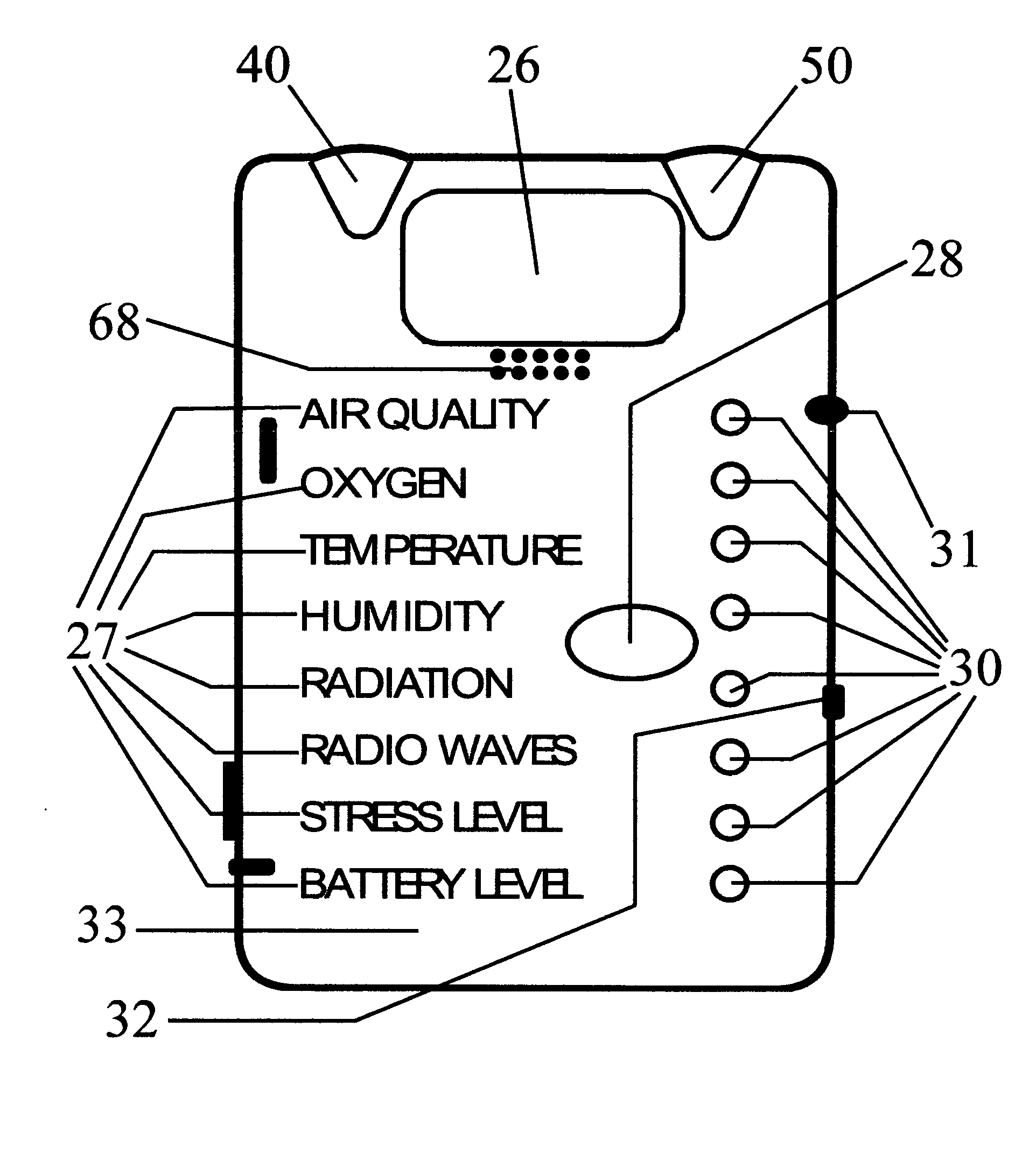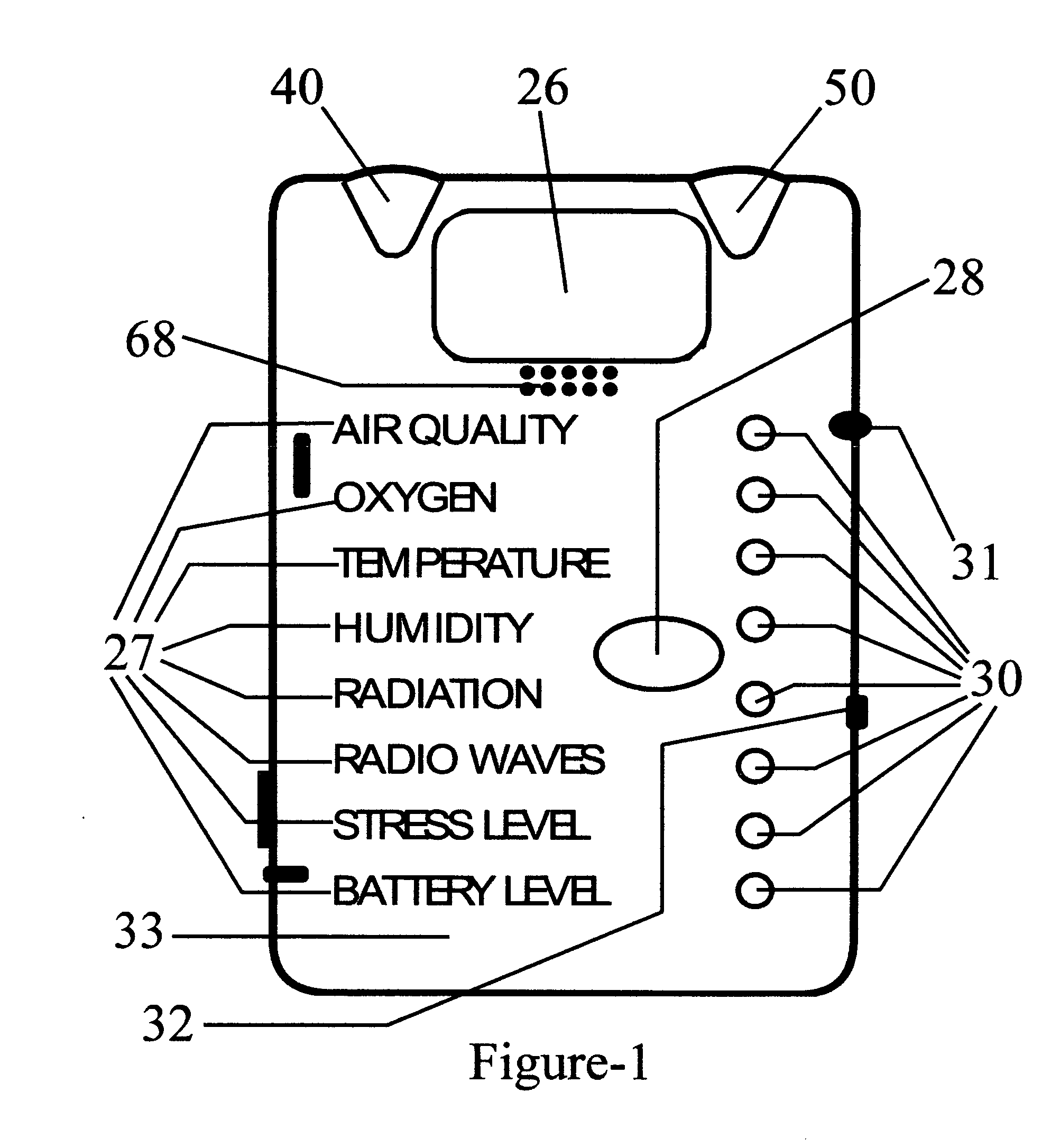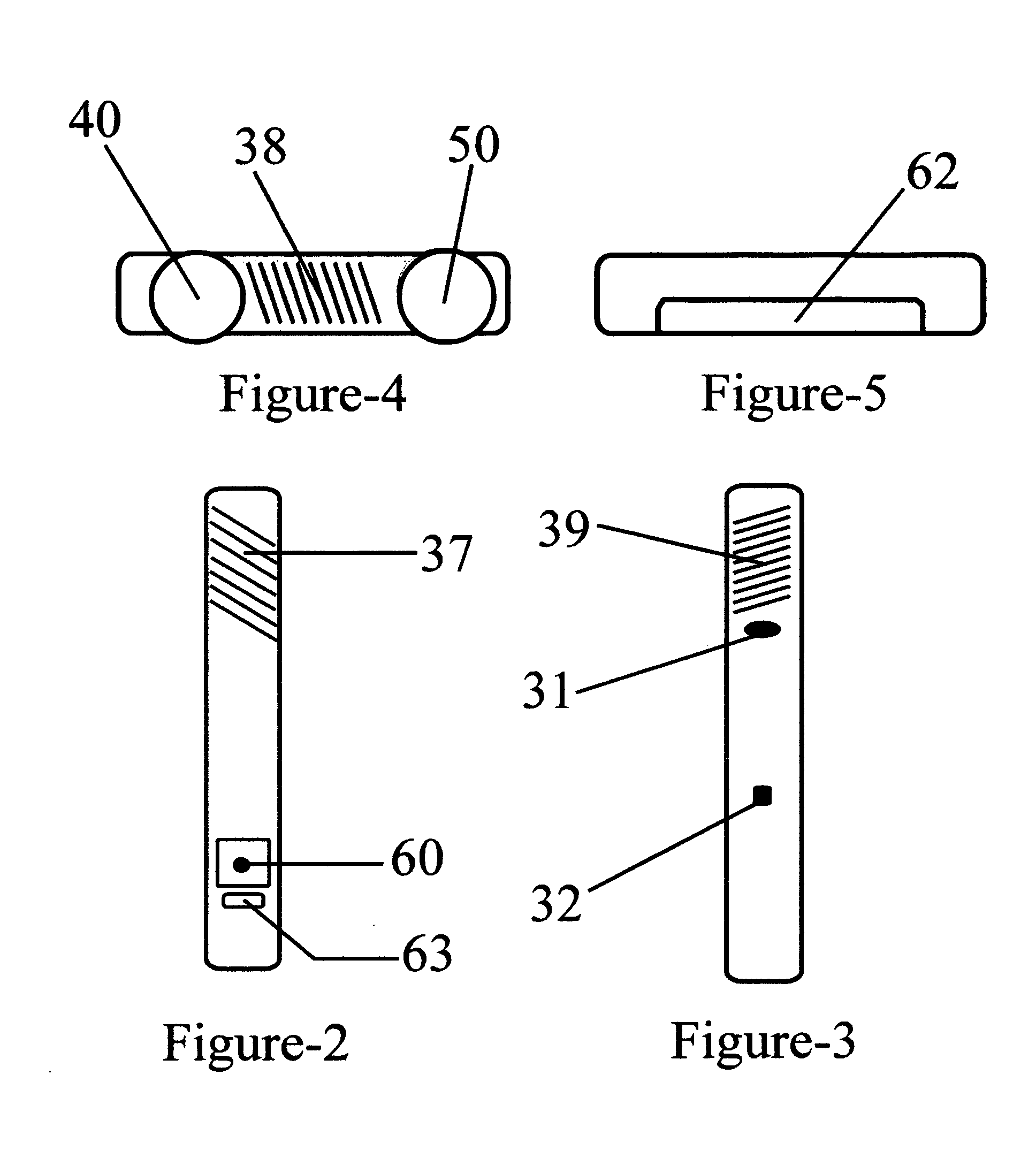Safety indicator and method
a safety indicator and indicator technology, applied in the direction of electric signalling details, counting objects on conveyors, instruments, etc., can solve the problems of inability to protect individuals with portable personal sensor devices, and inability to meet the needs of individual protection, etc., to achieve the effect of reducing avoiding the saturation of the final amplifier stage, and low noise floor
- Summary
- Abstract
- Description
- Claims
- Application Information
AI Technical Summary
Benefits of technology
Problems solved by technology
Method used
Image
Examples
Embodiment Construction
[0042] The described embodiment(s) of the structures and method are described herein and unless specifically noted, it is intended that the words and phrases in the specification and claims be given the ordinary dictionary or accustomed meaning to those of ordinary skilled artisans. If any other meaning is intended, that special meaning applied to a word or phrase will be specifically stated. It is intended that the inventions not be limited only to the specific structure, material or methods that are described in the preferred embodiments, but in addition, include any and all structures, materials or methods that perform the claimed function, along with any and all known or developed subsequently equivalent structures, materials or methods for performing the claimed function.
[0043] The attached FIGS. 1 through 7 illustrate a portable personal safety indicator 25 operating for real time personal safety monitoring by testing the environment for conditions that may be detrimental to ...
PUM
 Login to View More
Login to View More Abstract
Description
Claims
Application Information
 Login to View More
Login to View More - R&D
- Intellectual Property
- Life Sciences
- Materials
- Tech Scout
- Unparalleled Data Quality
- Higher Quality Content
- 60% Fewer Hallucinations
Browse by: Latest US Patents, China's latest patents, Technical Efficacy Thesaurus, Application Domain, Technology Topic, Popular Technical Reports.
© 2025 PatSnap. All rights reserved.Legal|Privacy policy|Modern Slavery Act Transparency Statement|Sitemap|About US| Contact US: help@patsnap.com



